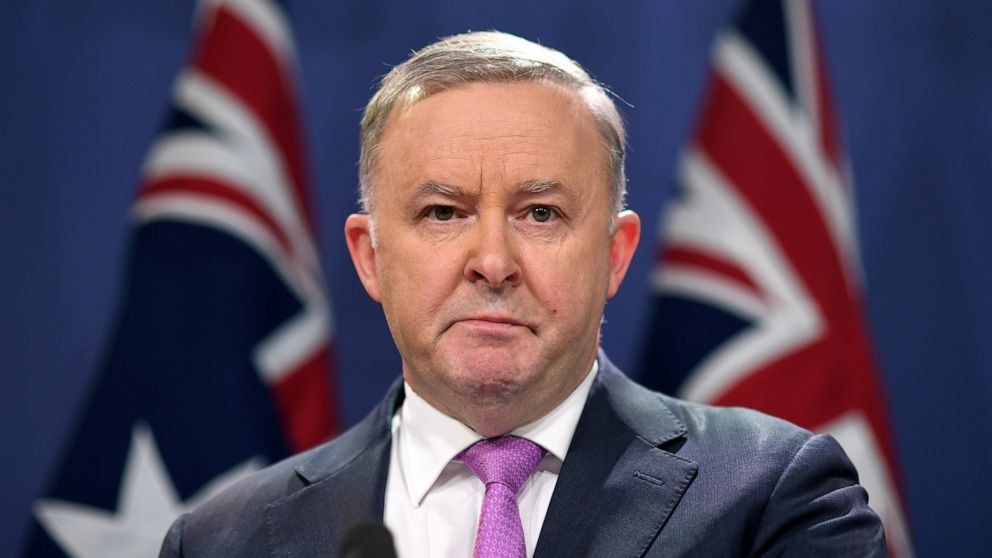Sweeping reform of the electoral laws puts democracy at risk. They shouldn’t be changed on a whim
- Written by Joshua Black, Visitor, School of History, Australian National University

The Albanese government is trying once more to legislate wide-ranging changes to the way federal elections are administered.
The 200-page Electoral Reform Bill[1], if passed, would transform the electoral donation rules by imposing donation and spending caps, increasing public funding, and improving transparency.
As noble as it sounds, the bill in its current form would undermine Australian democracy by favouring established parties over independent candidates and other new players.
Competitive disadvantage
The proposed donation caps[2] are a case in point.
Donors could give A$20,000 per year, per recipient, to a branch of a party or candidate for electioneering purposes. In practice, that means donors could give no more than $20,000 per year to an independent but could contribute $180,000 to the Labor Party via each of its state and federal branches, or $160,000 to the Liberal Party (which has one less branch than the ALP).
The donation cap would reset annually and after each federal election, allowing a single donor to give $720,000 to the Labor Party in one election cycle or $640,000 to the Liberals, but no more than $20,000 to an independent who declares their candidacy in the year of an election.
Avoiding the American road
There are welcome components in the bill. Faster disclosure and lower donation thresholds would make the system more transparent. Given the large amount of undisclosed funding – “dark money [4]” – currently propping up political parties, this would be a significant improvement.
But democracy is not cheap.
Last year, the Financial Times reported[5] Donald Trump and Kamala Harris spent a combined US$3.5 billion (A$5.6 billion) on their presidential races. This kind of money helps to sustain an American two-party system largely immune to challengers.
Australian campaigns look nothing like this, but there has been increased interest in the money spent in particular seats in recent years.
Former Labor minister Kim Carr revealed in his recent book[6] Labor spent $1 million to defeat the Greens in the Melbourne electorate of Batman in 2018, while the LNP reportedly[7] spent $600,000 campaigning to retain the affluent electorate of Fadden in 2023.
The bill before Parliament would cap election spending at $800,000 in each lower house seat. But the major parties could promote their generic party brand or a frontbench MP (in a seat other than their own) without affecting their capped spending.
These unfair discrepancies[8] would reward the major parties while kneecapping independents whose first hurdle is to get their name “out there”.
Haunted by billionaires
The government argues its bill limits the influence of “big money” in politics, namely mining boss Clive Palmer, who spent $117 million[9] at the last election.
For the Coalition, it is the community independents and their Climate 200 supporters who represent a kind of money “without precedent in the Australian political system” according to[10] departing MP Paul Fletcher.
Rather than getting big money out of politics, this bill would make the major parties’ own funding pipelines the only money that matters.
The bill recognises “nominated entities” whose payments to associated political parties would not be limited by donation caps. Independents would not have this privilege.
Meanwhile, the long delay before the commencement of the bill in 2026 would give wealthy donors time to get their ducks in order. They could amass their own war chests before the new laws are due to come in to force and then register them as nominated entities at a later date.
Who pays? The taxpayer, of course!
Parties and candidates with more than 4% of the primary vote currently receive public election funding. The Hawke government introduced this measure[12] as a “small insurance” against corruption.
The bill would raise the return to $5 per vote, which would mean an extra $41 million in funding, on top of the $71 million handed over after the 2022 election[13]. Most of this money would go to the major parties.
The windfall would come with no extra guardrails or guidelines about how those funds could be spent. There are no laws to guarantee truth in political advertising[14] at the federal level. Voters may well be paying for more political advertising that lies to them.
Closed consultations
Labor’s current strategy is to seek Coalition support for these changes to the rules of democracy.
Special Minister of State Don Farrell claims to have consulted widely on the design of the bill, but that came as news[15] to independents David Pocock and Kate Chaney when asked about it last week.
The government’s haste and secrecy suggest it wants neither the bill nor its motives closely scrutinised.
Australians care about the quality of their democracy. Polling[16] research by the Australia Institute last November showed four in five Australians expect electoral changes to be reviewed by a multi-party committee.
That’s what is needed for this bill. To do otherwise would threaten the integrity of Australian elections – or invite a High Court challenge[17] that may overturn the entire system if the court rules freedom of political expression is at stake.
Democracy matters. The rules must not be changed on a whim.
References
- ^ Electoral Reform Bill (ministers.pmc.gov.au)
- ^ proposed donation caps (australiainstitute.org.au)
- ^ Mick Tsikas/AAP (photos.aap.com.au)
- ^ dark money (www.theguardian.com)
- ^ reported (www.ft.com)
- ^ recent book (publishing.monash.edu)
- ^ reportedly (www.theguardian.com)
- ^ unfair discrepancies (australiainstitute.org.au)
- ^ spent $117 million (www.thenewdaily.com.au)
- ^ according to (www.paulfletcher.com.au)
- ^ Joel Carrett/AAP (photos.aap.com.au)
- ^ this measure (parlinfo.aph.gov.au)
- ^ 2022 election (www.aec.gov.au)
- ^ truth in political advertising (australiainstitute.org.au)
- ^ came as news (www.thesaturdaypaper.com.au)
- ^ Polling (australiainstitute.org.au)
- ^ High Court challenge (www.smh.com.au)














